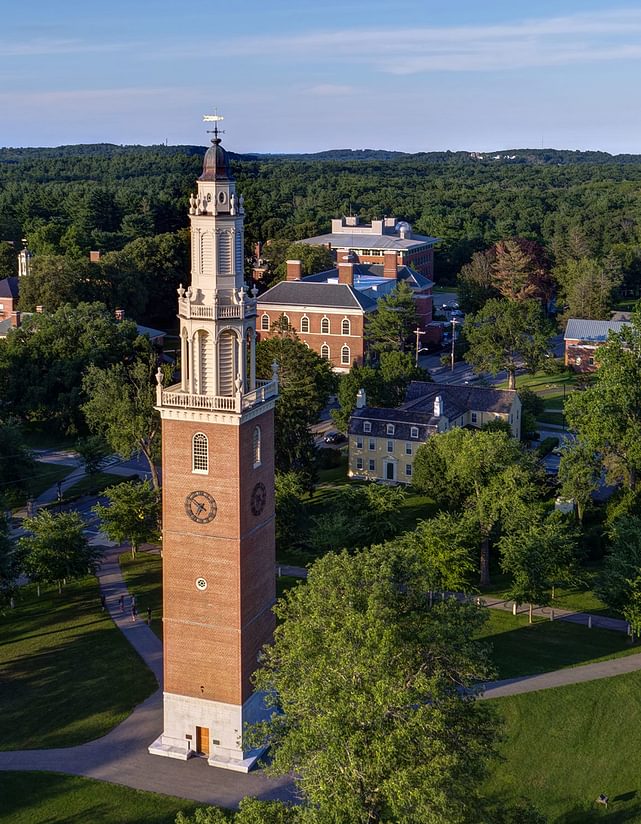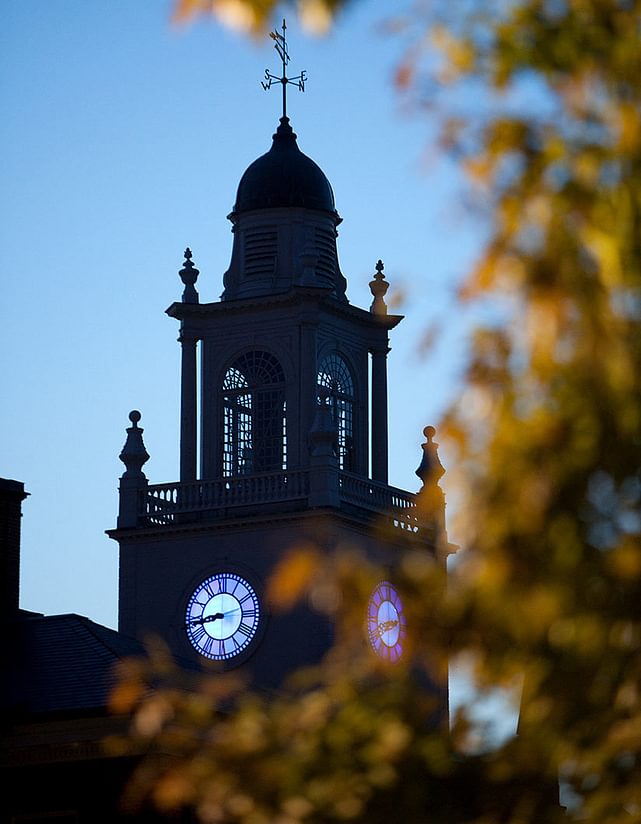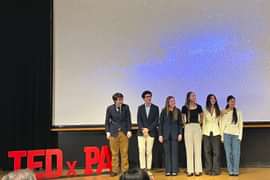
December 06, 2019
An ever-present Influence
Andover’s endowment has the power to advance or disruptby Tracy M. Sweet
One of Andover’s hardest working resources doesn’t teach or coach; it doesn’t run a dorm, impart wisdom or advice. But this silent contributor has enormous potential to influence the student experience and to make waves, both positive and negative, that affect the school’s aspirational future.
Andover’s endowment, valued at approximately $1.13 billion at the close of last fiscal year (June 30, 2019), provides funds that support about 40 percent of Andover’s $135 million gross annual budget. The endowment fuels a diverse range of priorities, including financial aid and faculty compensation.
A portfolio that tops $1 billion might signal extraordinary wealth. On the surface, that would be true: generations of philanthropy and prudent management have nurtured this resource to record levels. But those closest to the numbers have a more nuanced point of view.
“I say with a straight face that we probably have half the balance sheet that we really need to fully execute on what we want to be doing,” says Trustee Gil Caffray ’71, who chairs the Investment Committee and draws on four decades of experience in finance.
Andover wants to be paramount and excellent in everything it does; we absolutely support those aspirations—teaching excellence, superb facilities, access for the brightest young minds—but that comes with enormous expense.
”Among peer schools, Andover’s endowment ranks second to Exeter’s; it ranks fourth, however, when comparing endowment size per student. Why is that data point especially important? It speaks to the endowment’s horsepower, relative to the size and needs of the school, says Chief Investment Officer Kirsten Glantz.
“Our long-term objective is to maximize the real purchasing power of the endowment over time. That’s no small matter,” she says. “If we spend too much, have outsized losses in a down year, or don’t earn enough through the cycle, we erode capital available for future generations.”
Each year, the Academy targets a draw of 5 percent of its trailing 12 quarter value. In FY 2019 the gross draw, before any incoming gifts, was $54 million. Real purchasing power is also driven by the Higher Education Price Index, a measure of inflation that has outpaced the Consumer Price Index and hovered just under 3 percent in recent years.
“When you think about those factors and running a portfolio,” says Caffray, “it’s as if you start each year by paying an 8 percent preferred dividend before you can even think about anything accretive.”

Build the Investment Office
Those most keenly aware of that perennial challenge are Glantz and her New York-based team. Bridget Melvin, Andrew Jaffoni, and Xue Yang all were hired within the past year for their strong quantitative capabilities, team approach, and desire to broaden their skills. Each also brings complementary expertise in hedge fund and private equity data analysis, portfolio analytics, and asset allocation modeling. Staff veteran Karen Allen joined as office manager in 2005.
Their tethers to campus are Ferd Alonso, assistant head of school for business and administration, and Linda Dennison, director of finance. Members of their team also provide operational support. Weekly calls to Andover, trustee presentations, and Investment Committee meetings ensure that strategies remain well vetted and solidly executed.
Andover stands out for its in-house CIO and investment office. Typically, schools enlist a consultant in partnership with board members and finance staff.
Tom Israel ’62, trustee emeritus and initial chair of the Investment Committee, was one of the architects of the office in 2005, when now-trustee and board president-elect Amy Falls ’82 was appointed the school’s first CIO. It had become apparent that Andover needed to evolve its heavy reliance on consultants and volunteer board members.
“Our approach had run its course—and served us well—in a market that was heavily weighted in stocks and bonds,” Israel recalls. “Investing had grown more complex to include asset classes like hedge funds, real estate, and private equity. I believed it was well worth the experiment to establish a team of professionals whose only job was to manage the endowment.”
Exploit the Network
Appointed CIO in 2017, Glantz recalls one of the first pieces of advice she received: Tap the Andover network to jumpstart getting valuable insights on different asset classes as quickly as possible. In addition to alumni being generous with their time and wisdom, they have also opened some doors to high-profile managers or funds that would otherwise be inaccessible or closed to new investors.
The network was on full display at the Harvard Club last winter during Andover’s Future of the Endowment Conference in New York City. In this eighth gathering of its kind—similar events have taken place in London and Asia—alumni in finance, spanning decades from 1950 to 2010, workshopped ideas that might benefit Andover’s portfolio.
A series of questions helped spur conversation: What are important trends that will either create significant investment opportunity or eradicate wealth over the next three to five years? Where and how should we spend our valuable liquidity?
Roundtable discussions centered on global issues including, at the time, a percolating trade war with China and speculation on the 2020 presidential election. Opportunities in 5G networks, crypto currency, block chain technology, clean energy, and genomics were discussed. Debates surfaced around opportunities and risks associated with private equity and emerging markets.
Glantz, along with Falls, who initiated these events as CIO in 2007, acknowledges that Andover doesn’t typically emerge with a silver bullet solution. But surfacing new areas for deeper analysis and leveraging contacts who can share unique insights and help gain access is exactly what they hope for.
“The point is not necessarily to identify the elusive asset X on the spot,” says Glantz, “but to extend our network of human capital and build on one another’s expertise.”
Endow an Ideal
Andover stands out in a number of ways, but its commitment to need-blind admission requires the endowment to work at a higher capacity than that of any other school. “The board made an absolutely heroic decision to go need blind [in 2008],” says Caffray.
Perhaps even more heroic was the board’s courage and conviction to sustain the policy as markets imploded and volatility ensued just months later.
During that sobering period, as markets wavered then slowly regained their footing, financial aid was a cornerstone of PA’s fundraising efforts. It is once again paramount in the Knowledge & Goodness campaign, which aims to raise $110 million for scholarships and increase from 60 to 80 percent the portion of aid that is fully endowed.
If successful, this could be a game changer. To endow an ideal, youth from every quarter, would be a dream realized for many, including Interim Head of School Jim Ventre ’79. The former assistant head of school for admission and financial aid helped draft the need-blind policy and has witnessed its transformational effect.
Most notably it has changed the complexion of the student body to include a wider range of socioeconomic, geographic, and racial diversity. For the past two years, the campus has reflected 50 percent students of color. And this year Andover received applications from every U.S. state and 90 countries.
Need-blind admission allows us to create a community that mirrors the world our students will enter, one in which students open their minds to ideas and experiences unlike their own.
”Glantz, a graduate of Phillips Exeter, believes deeply in this caliber of residential education. With every market fluctuation, she remains motivated by Andover’s mission.
“Being immersed in a community where you are learning from the best teachers and brightest students around the table, where you are expected to contribute as a citizen around that table…this is where seeds are planted. Managing an endowment that materially supports access to this experience—there is no other mission as compelling to me.”

Photos by Kezi Barry '02
Categories: Leadership, Magazine
Other Stories

Andover’s 10th conference promotes open financial dialogue




